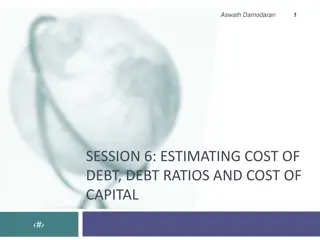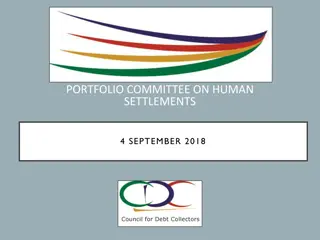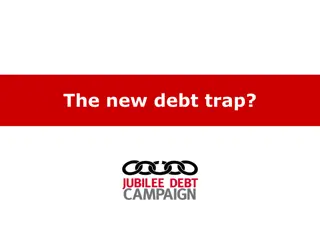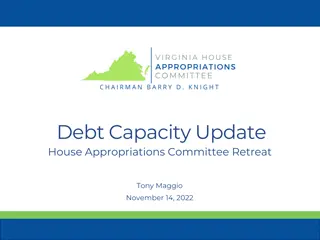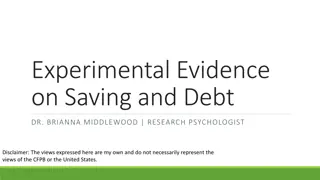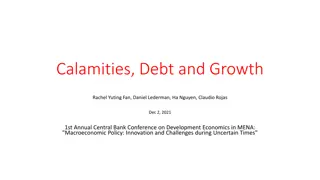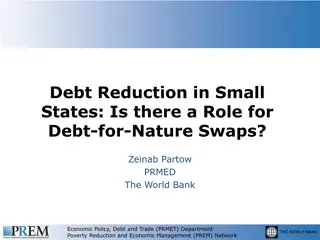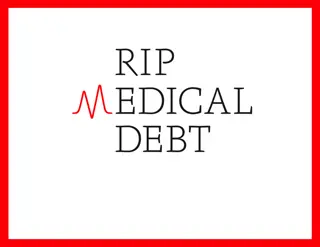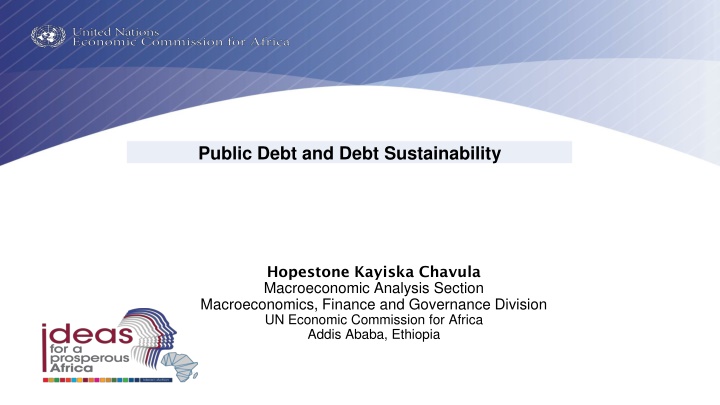
Global Public Debt Trends and Debt Sustainability
Explore the rising trends in public debt levels globally, driven by factors such as economic crises and infrastructure development. Discover the evolving structure of debt and its implications for different regions. Gain insights into the impacts of public debt on GDP growth, current account balances, and fiscal stability, highlighting the shift towards private debt as a significant contributor to external debt in Africa.
Download Presentation

Please find below an Image/Link to download the presentation.
The content on the website is provided AS IS for your information and personal use only. It may not be sold, licensed, or shared on other websites without obtaining consent from the author. If you encounter any issues during the download, it is possible that the publisher has removed the file from their server.
You are allowed to download the files provided on this website for personal or commercial use, subject to the condition that they are used lawfully. All files are the property of their respective owners.
The content on the website is provided AS IS for your information and personal use only. It may not be sold, licensed, or shared on other websites without obtaining consent from the author.
E N D
Presentation Transcript
Public Debt and Debt Sustainability Hopestone Kayiska Chavula Macroeconomic Analysis Section Macroeconomics, Finance and Governance Division UN Economic Commission for Africa Addis Ababa, Ethiopia
Public debt levels have been increasing globally But have risen faster since the mid-2010s as most developing countries used borrowing to bridge the financing gap In infrastructure & economic development, financing the rising fiscal deficits resulting from the oil shock, bolster foreign currency reserves & limit currency risks. Trends in public debt by global region, 5-year averages, 1995-2022 (note: HIPC and 2005 MDRI 100 90 80 70 Percentage (%) 60 50 40 In Africa, overall economic slowdown and persistent fiscal deficits led to rapid debt accumulation and increased debt burden. 30 20 10 0 From 2020 -2022 South Asia had the highest debt- GDP ratio followed by LAC then Africa. 1995-99 2000-04 2005-09 2010-14 2015-19 2020-22 World Africa EAP ECA LAC South Asia Notes: The values reported are simple averages [data source: IMF Fiscal Monitor database (IMF, 2024)].
Debt has mainly been a reaction to the effects of the crises Especially the 2008/09 economic and financial crisis; and the 2014/15 oil crisis. Public debt and GDP growth Current account & Fiscal balance 80 8 4 70 2 6 60 0 4 Leading to slow growth and weak external and fiscal balances. Percentage (%) Percentage (%) 50 Percentage (%) -2 40 2 -4 30 0 20 -6 -2 Govts resorted to increased external borrowing to cushion these effects, leading to the increase in Debt-to- GDP ratios. 10 -8 0 -4 2001 2003 2005 2007 2009 2011 2013 2015 2017 2019 2021 2023 -10 General government gross debt (% of GDP) Real GDP growth Current account balance (% of GDP) Budget balance (% of GDP) Notes: Data on gross debt (% of GDP) are from the IMF Fiscal Monitor database (IMF, 2024), and on external debt from the International Debt Statistics (IDS) database, World Bank (2023).
However, since the early 2000s private debt has become an increasing contributor to Africa s external debt Increasing from 10% in 2005 to 18% in 2020. 68 92 90 58 88 While concessional debt fell from 55.9% in 2005 to 41.8% in 2020, as govts opted for loans with no conditionalities. Percentage (%) Percentage (%) 48 86 38 84 82 28 However, still a large proportion of foreign debt is held by official lenders (avg 82% of PPG). 80 18 78 8 76 1995 1996 1997 1998 1999 2000 2001 2002 2003 2004 2005 2006 2007 2008 2009 2010 2011 2012 2013 2014 2015 2016 2017 2018 2019 2020 And debt structure varies greatly among countries (private debt, bond mrkt & Trad. lenders). PPG, official creditors (% PPG external debt) -- Left-hand scale PPG, private creditors (%PPG external debt) -- right-hand scale PPG, concessional (% PPG external debt) -- right-hand scale Notes: Left-hand scale: PPG debt from official creditors in percentages;right-hand scale: Concessional debt (% of PPG long-term external debt) and PPG debt from private creditors (% of PPG external debt) in percentages. The variables are the author s computation using data from IDS database, World Bank (2021). The simple averages for Africa are the author s computation.
DEBT SUSTAINABILITY Debt is sustainable if current and future obligations are met without exceptional financial assistance or an interruption in development or going into default. This is done by looking at a country s solvency and liquidity aspects
Debt-to-GDP ratio has been above prudent levels defined by the Debt Sustainability Framework between 2015-2023 Out of the 51 countries with available data: 36 had their debt above 50% threshold in 2023; and 24 countries having increased their ratios from 2022 levels Out of the 50 countries with available data, 22 countries had their debt-to- exports ratio above the 180% threshold in 2023. indicating high vulnerability to shocks Source: Afreximabank 2024
Debt servicing has also been rising since the financial crisis (as % of GDP and % of Exports) Debt service on external debt, total (percentage of gross domestic product) and debt service on external debt (percentage of exports of goods, services and primary income), Africa, 1995 2022 25 7 External debt service as % of GDP rose from 1.6% in 2011 to 4.1% in 2022. 6 20 5 Percentage (%) Percentage (%) 15 And rose by nearly 8 percentage points as %age of exports and primary income. 4 3 10 2 5 1 Africa is not producing enough for the international markets 0 0 Debt Services on External Debt, total (% GDP) - Right hand scale Debt service on external debt (% of exports of goods, services and primary income) - Left hand scale Notes: Left-hand scale: debt service on external debt as a percentage of exports of goods, services and primary income;right-hand scale: debt service on external debt as a percentage of GDP. World Development Indicators database (World Bank, 2024), and IMF 2024.
Increasing debt servicing costs as interests payments rise Debt Servicing: Interest Payments, Africa (1995-2022) Interest payments as % of exports rose from 1.2% in 2011 to 4.3% in 2020. 20 15 Percentage (%) And Interest payments on external debt as a % of exports of goods and services and primary income rose from 5.8% in 2011 to 12.9% in 2022. 10 5 0 Estimated to pick in 2024 reaching $163 bn Interest Payments (% of revenue) Interest Payments on External Debt (% of exports of Goods, services and primary income) Our export earnings fall far short of our debt obligations. Notes: The data on interest payment on external debt (% of export of goods and services and primary income are obtained from IDS database, World Bank (2023). The data on interest payment (% of revenue) is from WDI, World Bank (2024). The simple averages for Africa are the author s computations.
Declining external reserves since the 2008/09 crisis Reserve, total, including gold (% GDP), debt servicing on external debt (% GDP), and reserve, total, including gold (% of export) Africa, 1995 2022 Total reserves (%GDP) rose until 2009 (23.8%), fell to 14.2% by 2019, and climbed to 23.3% in 2022. 30 120 25 100 20 80 Percentage (%) Percentage (%) Total percentage of exports stood at 42.4% in 1995, peaked at 107% in 2009, and fell to 61% in 2022. reserves as a 15 60 10 40 5 20 0 0 2014 1995 1996 1997 1998 1999 2000 2001 2002 2003 2004 2005 2006 2007 2008 2009 2010 2011 2012 2013 2015 2016 2017 2018 2019 2020 2021 2022 Our generate enough reserves growth does not Total reserve (% GDP) - Left hand scale Debt servicing as a % of GDP - Left hand scale Total reserve % of export - Right hand scale Notes: Left-hand scale: total reserve including gold as a percentage GDP;debt servicing as a percentage of GDP; right-hand scale: total reserve including gold as a percentage of GDP. Source: World Development Indicators database (World Bank, 2024).
Reserve adequacy: External reserve per months of Imports and Short-term Debt have remained stable The import cover has remained stable in recent years, averaging around 7 months, except in 2019, when it increased to about 10 months. With 34 countries well above the desired 3 months of imports threshold. reserves-to-months-of- Reserves-to-Months of Import Cover and Short-Term Debt Ratio in Africa (2000 2023) 18 12 16 10 14 12 8 10 Months Ratio 6 8 6 4 The reserves-to-short-term debt ratio in Africa declining, dropping from 16.9% in 2013 to 4.4% in 2023. Indicating vulnerability shocks 4 has been 2 2 0 0 increasing external to Reserve to Months of import cover - Right hand Scale Reserves-to-Short-Term Debt Ratio - Left hand Scale Notes: Left-hand scale: reserve to the number of months cover; right-hand scale: the ratio of external reserves to short-term debt. Both the reserves-to-months of import cover and short-term debt ratio data are obtained from the Assessing Reserve Adequacy (ARA) dataset of IMF (2024).
Debt service as a percentage of government revenue has continued to rise (1995 2022) Debt service as a percentage of government revenue (1995 2022) 25 20 It increased from 5.3% in 2011 to 22% in 2021 with a slight decline in 2022. 15 Percentage Further indicating that our economies generating enough revenue resources. 10 are not 5 0 Notes: Debt service as a percentage of government revenue is computed using a data of government revenue, percent of GDP (% of GDP) from IMF database (2024), gross domestic product (GDP) data from world bank s world development indicators (WDI) 2024, and on debt service on external debt from WDI (world bank 2024).
African Countries Debt Sustainability Status as at September 30, 2024 (11 at risk of being in distress and 9 in debt distress Moderate Benin Burkina Faso Cabo Verde Cote d'Ivoire D. R. Congo High Burundi Cameroon Central African Republic Chad Comoros In debt Distress Congo Ghana Malawi Sao Tome & Principe Djibouti Sudan Zambia Zimbabwe Ethiopia Gambia, The Guinea Bissau Kenya Mozambique Sierra Leone South Sudan Guinea Lesotho Liberia Madagascar Mali Mauritania Niger Rwanda Senegal Somalia Tanzania Togo Uganda Source: IMF 2024
In conclusion Africa should play its part Growth - Invest in productive capacities and sectors and take advantage of innovative solutions and attract finance towards the SDGs, including from international public finance sources. Revisiting our neoclassical growth models ---- take advantage of the re-emerging new industrial policy with productive development policies (PDPs) The political economy of debt Our leadership needs to initiate deliberate efforts of moving away with debt dependency by critically scrutinizing where the debt is coming from; How it is used; and what terms are associated with it. Accelerate the implementation of the AfCFTA - expected to enable countries to break into new African markets while diversifying and industrializing their economies. Capitalise on the emerging innovative investment opportunities - transition towards renewable energy and the revitalized significance of critical minerals. The 4IR and AI as they become critical in countries development to bolster their fiscal revenues; use of digital technologies can help to reduce tax avoidance and evasion as well as corruption.








